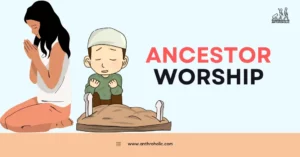AI Answer Evaluation Platform Live Now. Try Free Answer Evaluation Now
Case Study Method
A case study is an in-depth examination of a specific phenomenon, individual, or context, usually from a qualitative perspective. The case study method is typically used in social sciences, such as anthropology, sociology, and psychology, to explore real-life, complex, multifaceted phenomena within their context [1]. It often involves a blend of various data collection techniques, including interviews, observations, and document analysis.

History and Development of the Case Study Method
The origin of the case study method can be traced back to medical and psychological research, with seminal work by Freud and Piaget employing this approach. Gradually, it spread to disciplines like sociology and anthropology, where researchers found the method valuable for deeply understanding social phenomena, cultural practices, and individual behaviors within their natural contexts.
Anthropology, in particular, has a long-standing history with case study research, with seminal anthropologists like Bronislaw Malinowski advocating for detailed participant observation and in-depth study of individual cultures, essentially a form of case study. Malinowski’s work in the Trobriand Islands stands as a classic case study, providing detailed insights into the native culture [2].
Use of the Case Study Method in Different Disciplines
While the case study method has broad applicability across many disciplines, its utilization in anthropology is distinct for several reasons. Firstly, anthropologists emphasize cultural relativism, a perspective where a culture is understood within its own context. The case study method lends itself well to this, allowing for deep immersion and understanding of a particular culture or social group.
For example, Clifford Geertz’s interpretive case study of the Balinese cockfight is a perfect demonstration of the anthropological use of the case study method [3]. Through this study, Geertz explored the symbolic meaning of the cockfight in Balinese society, a discovery that would not have been possible without the in-depth, contextual exploration offered by the case study method.
Types of Case Study Methods
Case study research in anthropology is far from monolithic. It encompasses a range of different types, each suited to specific research objectives and questions. In this section, we will explore several main types of case studies, namely exploratory, descriptive, explanatory, intrinsic, instrumental, and collective case studies.
Exploratory Case Studies
Exploratory case studies aim to investigate a phenomenon or situation where there is little prior knowledge or where new insights are desired. They are often employed when a researcher wants to identify the important research questions and suitable research methods for a subsequent larger study. For instance, an anthropologist may conduct an exploratory case study to understand the dynamics of a newly discovered indigenous tribe.
Descriptive Case Studies
Descriptive case studies, as the name implies, aim to describe a phenomenon in its natural context. These studies emphasize a detailed, in-depth portrayal of the case, often drawing on various data sources for a comprehensive understanding. For example, a descriptive case study might provide a detailed account of a unique cultural ritual or societal structure within a specific ethnic group.
Explanatory Case Studies
Explanatory case studies seek to explain a particular phenomenon or outcome. These case studies are common in disciplines that focus on causation or causal relationships. In anthropology, explanatory case studies might investigate the cause-effect relationship between cultural practices and societal outcomes, such as the impact of gender roles on societal structure in a particular culture.
Intrinsic Case Study
Intrinsic case study research focuses on the case itself, typically when the case presents an unusual or unique phenomenon. The goal is not to generalize beyond the case but to gain a deeper understanding of the case itself. An anthropologist might use this method to study an isolated community that has not had contact with the outside world, for example.
Instrumental Case Study
Instrumental case studies, on the other hand, focus on a particular issue or concern, using the case as a means to provide insight into that issue. The case itself is of secondary interest and serves as a conduit to understand the wider issue. An anthropologist might use an instrumental case study to understand the impacts of globalization on indigenous cultures.
Collective Case Study
Collective case studies, also known as multiple case studies, involve studying several cases simultaneously to understand a phenomenon, population, or general condition. This approach is valuable in anthropology when comparing and contrasting different cultures or societies.
Design and Development of Case Studies
Case study research involves a rigorous design and development process, ensuring that the data gathered is representative, robust, and relevant.
Selecting the Case(s)
The process begins with careful case selection. In anthropology, the selection is typically driven by the research question and the phenomenon under investigation. For instance, if an anthropologist is studying the impact of modernization on tribal cultures, a tribe undergoing significant societal changes would be an apt case.
Data Collection Methods in Case Studies
Once the case is selected, data collection becomes the next pivotal step. Anthropologists often employ a multimethod approach, using methods such as interviews, observations, and document analysis to ensure a holistic understanding of the case. For example, when studying an indigenous tribe, anthropologists might live within the community, conduct interviews, observe daily activities, and study any available historical or legal documents.
Importance of Contextualization in Case Studies
Contextualization is essential in anthropological case studies. The aim is to understand the case within its natural setting, taking into account the cultural, social, political, and environmental factors that might affect it. In studying a cultural practice, an anthropologist must contextualize it within the broader cultural beliefs, societal norms, and historical background of the community.
The Role of Triangulation in Enhancing Validity
Triangulation, using multiple data sources or methods to study the same phenomenon, enhances the validity of case study research. By corroborating findings from different data sources or methods, anthropologists can build a more credible and comprehensive understanding of the case.
Analyzing and Interpreting Case Studies
After data collection, the task shifts to analysis and interpretation.
Coding and Thematic Analysis
Coding and thematic analysis are common methods for analyzing qualitative data in case studies. Through a process of coding, data are broken down into manageable chunks, then grouped into themes that allow for patterns and insights to emerge.
Grounded Theory Analysis
Grounded theory analysis is another approach often used in case studies. It involves developing a theory grounded in the data collected, providing a framework for understanding the phenomenon under study.
Cross-case Synthesis
In multiple or collective case studies, cross-case synthesis can be useful. This process involves comparing and contrasting the findings across different cases, identifying common themes and differences.
Analyzing Case Studies within Cultural Context
Importantly, all analysis and interpretation must consider the cultural context. In anthropology, this means understanding the cultural norms, beliefs, and values that may influence the phenomenon under study.
Strengths and Limitations of Case Study Methods
Like all research methods, case studies come with both strengths and limitations. Understanding these aspects is essential for researchers in anthropology and other disciplines, as it allows them to leverage the strengths and mitigate the limitations.
Strengths of Case Study Methods
Depth of Information and Insights
One of the key strengths of case studies lies in the depth of information they provide. By focusing on a single case or a small number of cases, researchers can delve into the intricacies and complexities of the subject matter. This depth is invaluable in anthropology, allowing anthropologists to understand phenomena from the insider’s perspective. For instance, studying a specific cultural practice within an indigenous tribe can provide profound insights into the tribe’s worldview and belief systems.
Flexibility in Data Collection
The case study method allows for flexibility in data collection. Researchers can employ a mix of methods, such as interviews, observations, document analysis, and more, depending on what is most suitable for the case and the research question. This flexibility enables anthropologists to adapt to the field situation, ensuring they capture the most relevant and meaningful data.
Context Sensitivity
Case studies are highly sensitive to context. They allow for the study of a phenomenon within its real-world context, providing a rich, holistic understanding. This sensitivity aligns with the anthropological commitment to cultural relativism, ensuring that phenomena are understood within the cultural, social, and historical context in which they occur.
Limitations of Case Study Methods
Challenges in Generalization
A common critique of case study research is its limited ability to generalize. Because case studies focus on specific cases, the findings might not be applicable to other cases or broader populations. However, it is worth noting that generalization is not always the goal in anthropological research. Often, the aim is to provide an in-depth understanding of a specific cultural context.
Time and Resource Constraints
Conducting case study research is often time-consuming and resource-intensive [4]. Collecting and analyzing data from multiple sources, spending extensive time in the field, and the iterative nature of qualitative analysis can demand substantial resources. These constraints might limit the feasibility of case studies in some situations.
The Future of Case Study Method in Anthropology
In the rapidly evolving world of research, the case study method continues to be a crucial tool in the anthropologist’s arsenal. However, the future will likely see further evolution and innovation in the application of this method, in response to new challenges and opportunities.
Emerging Trends in Case Study Research
Digital technology has revolutionized the way we conduct research, and case studies are no exception. Digital ethnography, for example, is becoming increasingly prominent. It allows anthropologists to study online communities and digital cultures just as they would physical communities.
In the context of case studies, this might involve studying the interactions and norms within an online gaming community or a social media network. As digital spaces become increasingly important in our lives, the relevance and prevalence of digital ethnography and virtual case studies are likely to grow.
Interdisciplinary Case Studies
Interdisciplinary case studies, where multiple disciplines combine to study a single case, are another promising trend. For example, anthropologists might collaborate with psychologists, sociologists, or environmental scientists to study a community’s response to climate change or other multifaceted phenomena. Such interdisciplinary studies can offer a more comprehensive understanding, taking into account the biological, psychological, social, and cultural dimensions.
Globalization and Its Impact on Case Study Research
Globalization has major implications for case study research in anthropology. As communities become more interconnected and influences become more global, anthropologists can no longer study cultures in isolation. Instead, they need to consider global influences, from the influx of technology to the impacts of international policies [5].
In practical terms, this might involve studying how global trends impact local cultures, or how local cultures resist, adapt to, or influence global trends. The case study method, with its focus on specific contexts, is well-suited to explore these complex dynamics.
In conclusion, while the principles of case study research remain the same, the future will bring new contexts, new challenges, and new opportunities. Anthropologists will need to innovate and adapt, ensuring that the case study method continues to be a valuable tool for understanding human societies.
References
[1] Baxter, P., & Jack, S. (2008). Qualitative Case Study Methodology: Study Design and Implementation for Novice Researchers. The Qualitative Report, 13(4), 544-559.
[2] Malinowski, B. (1922). Argonauts of the Western Pacific: An account of native enterprise and adventure in the archipelagoes of Melanesian New Guinea. Routledge & Kegan Paul.
[3] Geertz, C. (1973). The Interpretation of Cultures. Basic Books.
[4] Yin, R. K. (2013). Case study research: Design and methods. Sage publications.
[5] Inda, J. X., & Rosaldo, R. (2002). The Anthropology of Globalization: A Reader. Blackwell Publishers.




